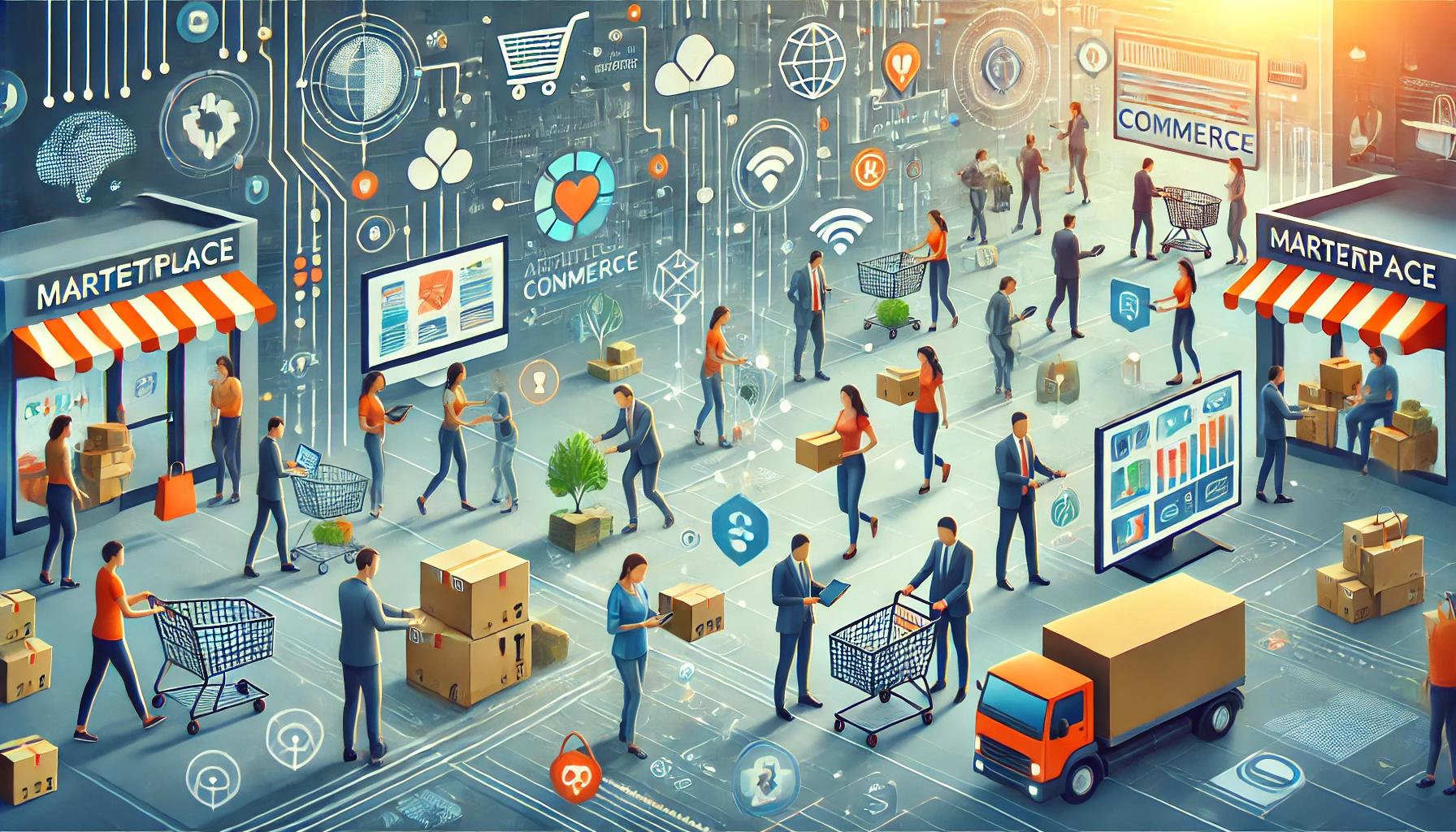Marketplaces: Trends and Prospects. How Marketplaces Are Changing Commerce
Introduction
Marketplaces like Amazon, Alibaba, eBay, and Wildberries are becoming increasingly important players in global commerce. These platforms are not only changing how consumers purchase goods but also transforming business models. In recent years, we have seen significant shifts in trade strategies, driven by the rise of marketplaces. In this article, we will explore the key trends and future prospects of marketplaces and their impact on global trade.
Trends in Marketplace Development
Growth of Mobile Commerce (m-commerce) One of the most noticeable trends is the increase in purchases made via mobile devices. According to Statista, more than 72% of online sales in 2023 were made through smartphones. Mobile apps for marketplaces are becoming the primary shopping channels, pushing the development of user-friendly and intuitive interfaces.
Integration of Artificial Intelligence (AI) Marketplaces are increasingly adopting AI to enhance the user experience. For example, Amazon uses AI to personalize recommendations and improve logistics efficiency. These technologies help marketplaces not only better understand user preferences but also reduce operational costs.
Omnichannel Strategy The shift to omnichannel retail has become a key factor for marketplaces. Consumers now expect a seamless shopping experience both online and in physical stores. According to McKinsey, companies that have implemented an omnichannel strategy show higher growth rates compared to competitors.
Rise of Niche Marketplaces In addition to global giants, specialized platforms catering to narrow niches are gaining popularity. Examples include Etsy (for handcrafted goods) and Farfetch (for luxury fashion). These marketplaces provide opportunities for smaller brands and producers to find their audience and compete with larger players.
Focus on Sustainability and Environmental Initiatives Consumers are increasingly paying attention to the environmental impact of the products they buy. In response, marketplaces are introducing sustainability programs. For instance, Alibaba has launched initiatives to reduce carbon emissions and use eco-friendly packaging. This not only improves the company’s image but also complies with new regulations in various countries.
Future Prospects for Marketplaces
International Expansion Marketplaces are becoming more global, offering customers products from around the world. For example, JD.com is actively expanding beyond China, attracting sellers and buyers from Europe and the U.S. This opens up new markets for small and medium-sized businesses that can easily go international.
Growth of the Direct-to-Consumer (D2C) Model Traditional retail is giving way to the Direct-to-Consumer model, where manufacturers can sell products directly through marketplaces, bypassing intermediaries. This leads to lower costs for end consumers and greater brand control.
Integration with Social Platforms Interaction between marketplaces and social networks is increasing. Many platforms like Instagram and TikTok now offer shopping features, allowing users to purchase products directly through social media. This creates an additional traffic stream for marketplaces and helps brands gain visibility.
Development of Logistics Infrastructure To handle the growing volume of orders, marketplaces are investing in the development of logistics networks. For example, Amazon continues to expand its network of warehouses and implement automated systems to speed up delivery. This not only improves efficiency but also allows platforms to offer services like same-day delivery.
Building Trust through Blockchain Blockchain technology is starting to be used in marketplaces to improve transaction transparency and track supply chains. This is particularly important in international trade, where buyers want to be assured of product authenticity and transaction security.
Conclusion
Marketplaces continue to dramatically reshape commerce, creating new opportunities for both consumers and businesses. Globalization, mobile commerce, and the integration of new technologies make marketplaces key players in the market. Their influence will only grow in the future, and companies aiming to remain competitive need to consider these trends and adapt to the new conditions.

.jpeg)